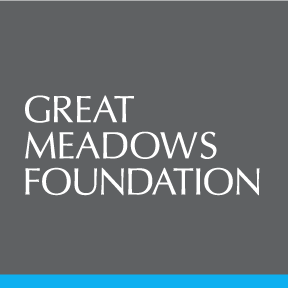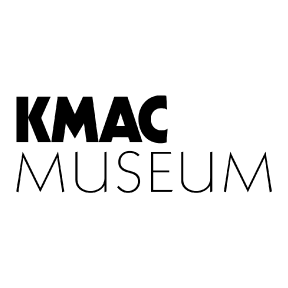

ebere's formations are inspired by the architectures of the Circular Stepped Pyramids in Southeastern Nigeria (Igboland). Photo by TJ Walker.
owoko
Review
Sea M. Miller
“It hurts/the heart to see/something so vast and deep/can also be made of dirt./And if it can be/of earth, the body/ponders, might such a landscape exist also within me?”
–Robin Coste Lewis, ‘Beauty’s Nest,’ in Voyage of the Sable Venus and Other Poems
Where does the sun hit a dark body? What time? Which curves, which grooves, make the body sing? How can a body be expressed as an object–and still be alive? Gratitude for the many questions—rhetorical or otherwise—that emerge from the installation work of sculpture artist and designer ebere agwuncha. Their practice of integrating ritual performance, clay sculpture, sound, and other archival materials evokes a space to wonder and revel in the recognition of ancestral memory, kinship and diasporic longing.
As the dark winter sets over the city of Chicago, I am confronted with the memory of breathing warm summer air; a journal in tow, walking through Logan Square. In May 2022, owoko opened at The Comfort Station, a small building that rests on a plot of grass across the street from a busy intersection; hot asphalt, traffic lights, and wandering pedestrians obscure the entrance to this multidisciplinary artist space. Still, on this day, I found the door of that red brick and mahogany wood building in an effort to witness the final days of agwuncha’s ritual performance and installation work, titled owoko.
The owoko exhibition was nestled in a small gallery space with barred windows, wooden doors and walls painted white; here there are intricate cobwebs and dust that muddle the corners of the ceiling and catch the sunlight. As an art installation that engages with the architectures and living histories of ancient and contemporary Igbo structures, the pieces that comprise owoko are amplified by the gallery space itself. The artist, agwuncha, crafts ceramic bodies wrapped in woven natural fibers. The clay pots that the artist creates highlight a communal practice of water pot-making often found along the Niger Delta in Southeastern Nigeria—it was a practice enacted primarily by Igbo women who resided in the region during the early 20th century.
The installation is centered around five dark clay bodies resting in a plot of soil; all are set in a straight line that stretches the length of the largest window in the gallery. Of the five pieces, the center vessel is described by the artist as a “soundscape and reservoir.” The center vessel is “activated” by an ongoing water ritual. In this ritual, the artist asks viewers to fill the center vessel with river water gathered by their family and loved ones. The river water is stored in another clay body positioned at the front door of the gallery. The viewer collects the water in a glass jar, offers a prayer, intention or breath, then pours the water into the center vessel, watching as the substance reaches the vessel’s rim. During our visit to the installation that day, the river water reached the top of the center vessel and spilled over the rim onto the plotted earth below. The artist had waited for this moment. After many pours & prayers, the vessel filled just enough to spill. We watched as the water fell down the shape of the vessel, reminding me how tears fall along the shape of a face. We said, “ashe,” feeling charged by the presence of light, water, and communion within the space.
agwuncha describes the ritual as an offering of gratitude as well as a meditation on the value and scarcity of clean water—indicating how environmental racism and the climate crisis affects many communities of color throughout the United States and abroad. The ritual is also a call to ancestral memory, and a recognition of the abundance we all share with one another through the acts of communion and habitual care work. For example, in our conversation, the artist would often refer to their clay structures as “bodies” in order to emphasize the intentionality and aliveness of the objects. For agwuncha, the historical reference extends beyond a temporal association of “pastness” towards an instance on black futurities, presence, and aspiration–a term which Black Studies scholar Christina Sharpe describes as a kind of “wake work”; the praxis of “putting breath back in the body” (Sharpe, 113).
The importance of family and diasporic kinship also informs the ways that owoko operates as a ritual and guided meditation on a body’s interconnectedness with the earth. For example, in addition to the five clay bodies, the installation is also designed with five points of engagement: a collection of hand-made tiles, a video projection, photographs, a few short poems, and then the clay vessels. Each point of engagement resonates as a familial relation for the artist. When studying the hand-made tiles, agwuncha tells me the story of how their father taught them about what it means to be a designer; the titles etched with lines and circles, placed together as a kind
of clay circuitry against the gallery wall. The video projection adjacent to the titles is found footage paired with the voice of the artist’s mother—a muddled conversation about the feeling of their ancestry and the life-giving force of black women’s labor. The photographs chronicle a studio visit with the artist’s sister, images that display the two of them talking, viewing the work together, crafting together in the studio space. The poems, on display near the video projection, are also in reference to the objects, family and ancestral resonances. Either by intention or coincidence, each of these repetitions draws us closer to understanding the significance of owoko: the river water as a life force, the fire of the kiln as ancestral memory, the clay earth as ancient structure, and the breath animating it all.
Ultimately, in owoko, the art object(s) facilitate a ritual performance that is informed by the traditions of a not-so-forgotten ancestral homeland. For agwuncha, the clay body is a conduit for connection with the ancestors and others who choose to acknowledge the labor practices that sustain and restore our understanding of community (& communion). Through this iteration of their work, the viewer becomes a witness, invited into the life of an object-turned-subject—stoic, yet vibrating, temporally fugitive and alive. Especially now, as the snow falls in Chicago, I am reminded of that space and time within owoko: how water spills out of the dark which seems to have no end.
 the owoko ritual is activated by water gathered from a "nearby stream" that was collected by the artist & their family. Photo by TJ Walker.
the owoko ritual is activated by water gathered from a "nearby stream" that was collected by the artist & their family. Photo by TJ Walker.
photographs, poetry, and a video/audio installation accompany the clay structures amplifying the architecture of the gallery space. Photo by TJ Walker.
-
Published with support through the TAUNT First Byline Fellowship.
2.5.23
Sea (shey/they) is a writer, performer and educator currently based in Chicago, Illinois.
Published with support through the TAUNT First Byline Fellowship.
2.5.23
Sea (shey/they) is a writer, performer and educator currently based in Chicago, Illinois.







